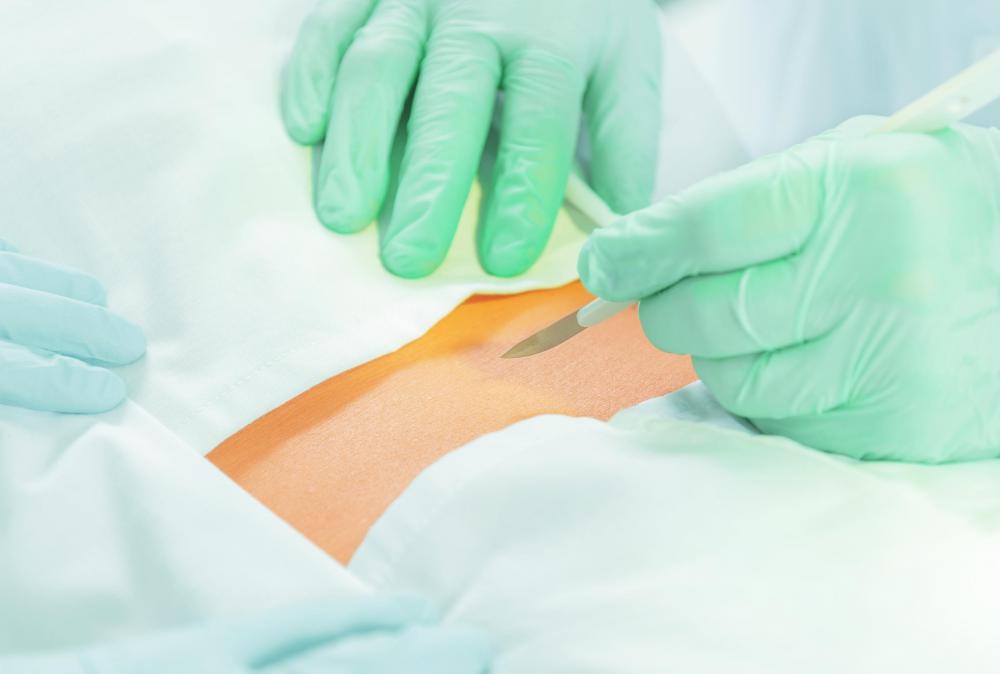At WiseGEEK, we're committed to delivering accurate, trustworthy information. Our expert-authored content is rigorously fact-checked and sourced from credible authorities. Discover how we uphold the highest standards in providing you with reliable knowledge.
What is an Inguinal Orchiectomy?
Inguinal orchiectomy or orchidectomy refers to a way in which a testicle may be surgically removed. The term inguinal applies to the method and location employed, while orchiectomy and orchidectomy both mean surgical testicle removal. This surgery is the most common method for testicular removal and it might be employed for a number of reasons. Some of these include reducing testosterone level, removal of a cancerous testicle, or to increase survival rates of other forms of cancer, particularly prostate cancer.
There are several ways to surgically remove a testicle, and as mentioned, inguinal refers to method and location. In an inguinal orchiectomy, the surgeon chooses to access the testicle from the groin, right below where the average belt or waistline on pants would fall. Through this incision access to the testes is gained, and the one slated for removal can be carefully pulled out. Sometimes a bilateral inguinal orchiectomy is performed instead, if there is need to remove both testicles.

As complicated and potentially frightening as an inguinal orchiectomy sounds, this procedure is exceptionally common, and performed by competent surgeons with great ease. Most times the incision area is extremely small, and the full surgery doesn’t take more than an hour. The occasional complication might lengthen a surgery, but usually not by much time. The surgery could be a little longer if men opt to have a prosthetic testicle placed after testicle removal, for instance.

Given the ease at which inguinal orchiectomy is generally performed, many hospitals and surgical centers do this procedure as an outpatient or same day surgery. In most cases it is done under general anesthesia, though local anesthetic and/or a combination of twilight sleep might be considered if general anesthetic risk is high. Men can expect some soreness in the first days after the procedure, and this might be felt at the testicle and at incision site.

It is rare for people to have complications of this surgery, but occasionally excess bleeding occurs, or even more rarely, infection could develop at the incision site. If pus occurs there, if the incision site breaks open, or if there is heat or radiating red streaks from the incision or in the testicular area, this should be brought to the attention of the doctor or treating surgeon. These complications do not happen often, and are usually caught early by physician follow-up; most men who experience inguinal orchiectomy will not have more than a few days of discomfort. Most men are able to resume all activity within a few weeks of the surgery, but this recommendation may also depend on the health reasons that prompted testicular removal.
AS FEATURED ON:
AS FEATURED ON:
















Discuss this Article
Post your comments